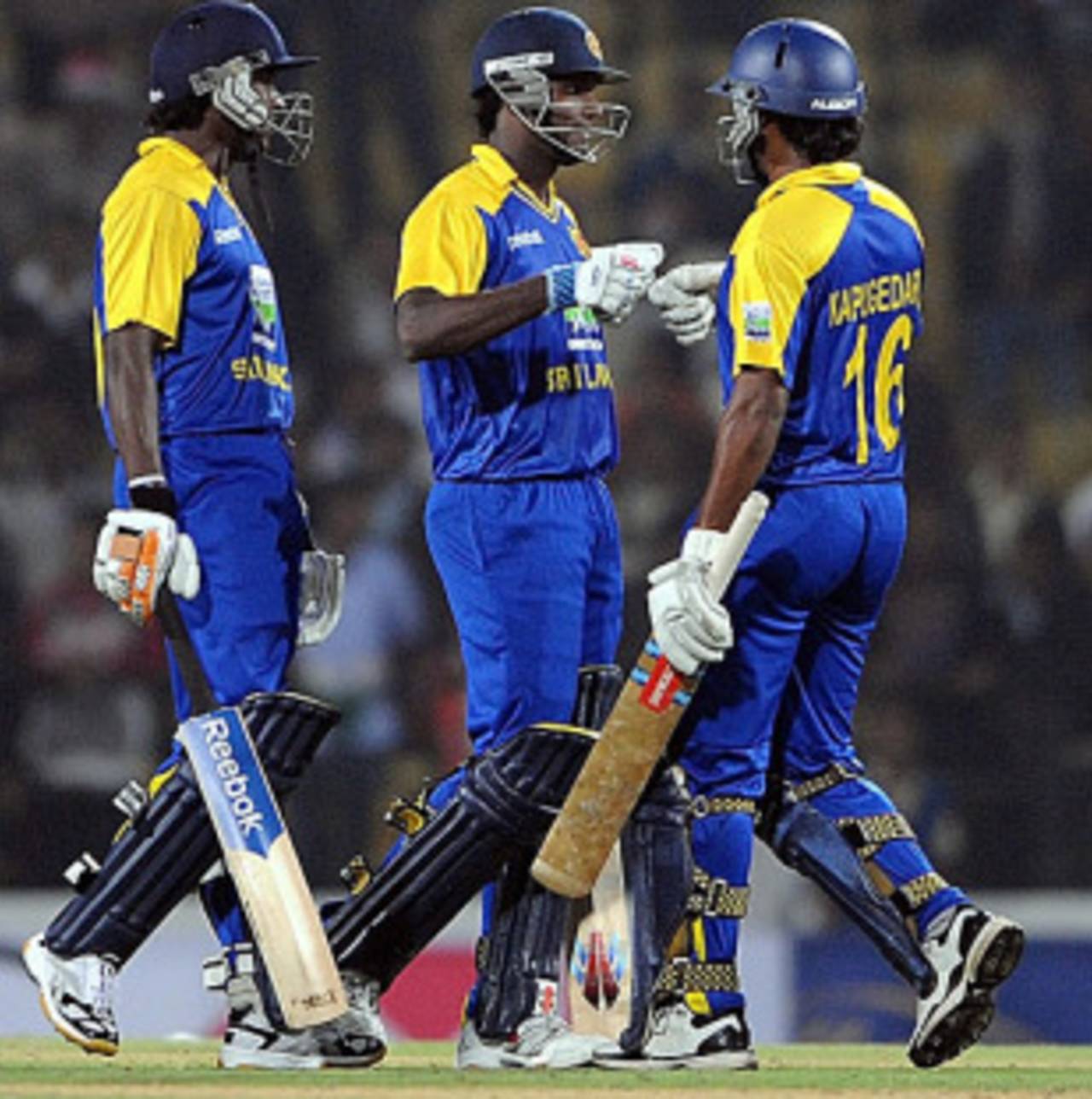Powerplay tweaks and end of runners
West Indies' tour of Bangladesh, which begins with a Twenty20 on October 11, will be the first international series under the ICC's revised playing conditions

Three's a crowd: there will be no more runners allowed in international cricket • AFP
In a full ODI, the teams can take the bowling and batting Powerplays (five overs each) at the start of an over after 15 overs of an innings have been bowled. They must complete the Powerplays by the 40th over, which means the last block of fielding restrictions must begin in the 36th over. The first ten overs will comprise the mandatory Powerplay. This condition will not apply to innings reduced to fewer than 40 overs.
A batsman will not be allowed a runner under any circumstances. The batsman can retire hurt and return to bat at a later stage in the innings.
Each fielding team will be given two new balls to be used in alternate overs, one at each end. The mandatory change of the ball after the 34th over of an innings will not take place anymore.
If a fielding team appeals and the umpire feels the batsman has significantly changed his direction without probable cause, while running between the wickets, and obstructed an attempt to run him out, the umpire can give the batsman out for obstructing the field. It is not relevant whether a run out would have been affected or not. The on-field umpires are allowed to consult the third umpire in making the decision. The other circumstances in which a batsman can be out obstructing the field are still applicable.
This amendment refers to the calculation of the time for which a player cannot bat or bowl because he or she was off the field.
Previously, the bowler could run out a non-striker backing up only if he did so before entering his delivery stride. This meant that as the bowler's back foot landed, the non-striker could move down the pitch before the bowler delivered the ball.
According to clause 16.2.2 of the Test match playing conditions: "The umpires may decide to play 15 minutes (a minimum of four overs) extra time at the scheduled lunch or tea interval of any day if requested by either captain if, in the umpires' opinion, it would bring about a definite result in that session. If the umpires do not believe a result can be achieved no extra time shall be allowed.
If a team is nine wickets down at the time of the lunch interval, the break will be delayed by a maximum of 30 minutes. Previously, only tea was delay-able, while lunch was taken even if a team was nine down.
The minimum interval for an uninterrupted ODI match has been increased from 20 minutes to 30 minutes.